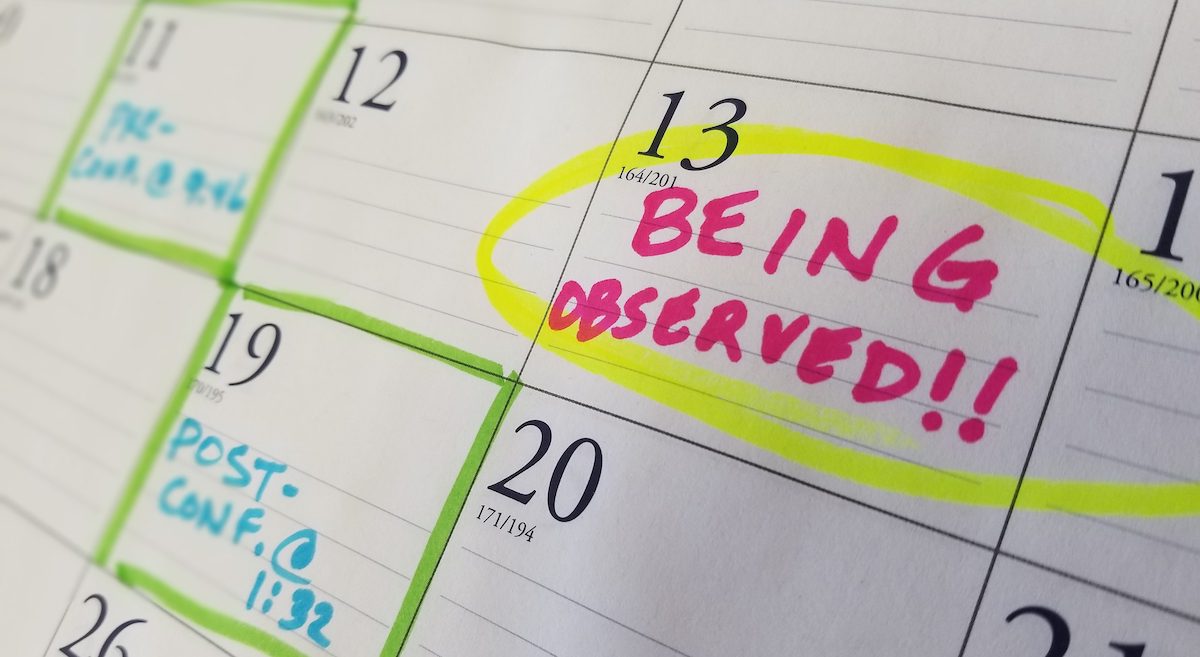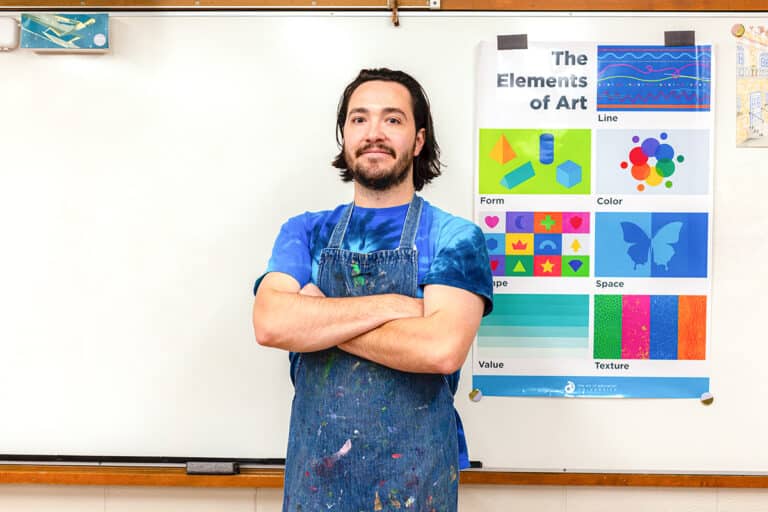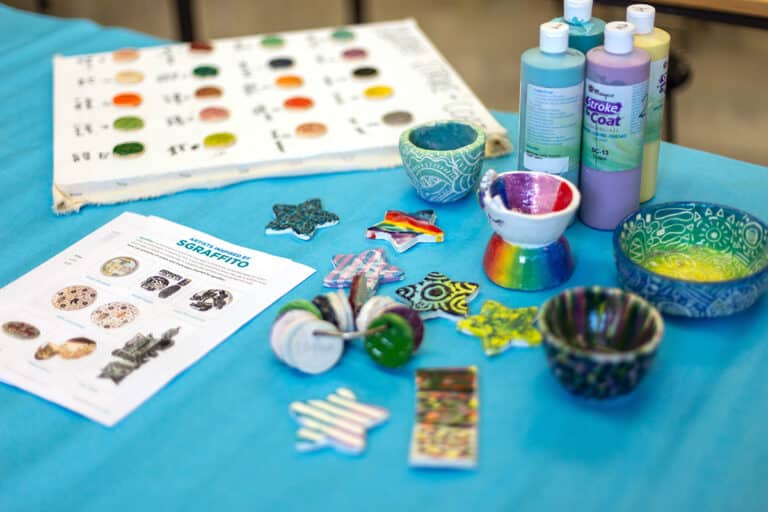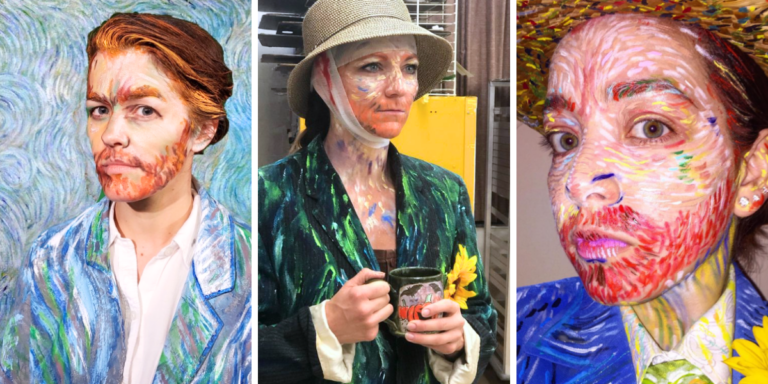Being observed can be a stressful experience. The fear of judgment by a supervisor or colleague can be unnerving when you’re used to being the only adult in the room. This becomes more concerning when their perspective can have implications on your evaluation and future employment. And unless you’re one of lucky few, these concerns are only magnified because your classroom observer doesn’t have an art background.
But there is some truth to a common line, “Good teaching is good teaching.”
So, regardless of the medium or subject matter, here are some things to show your administrators during the observation process.
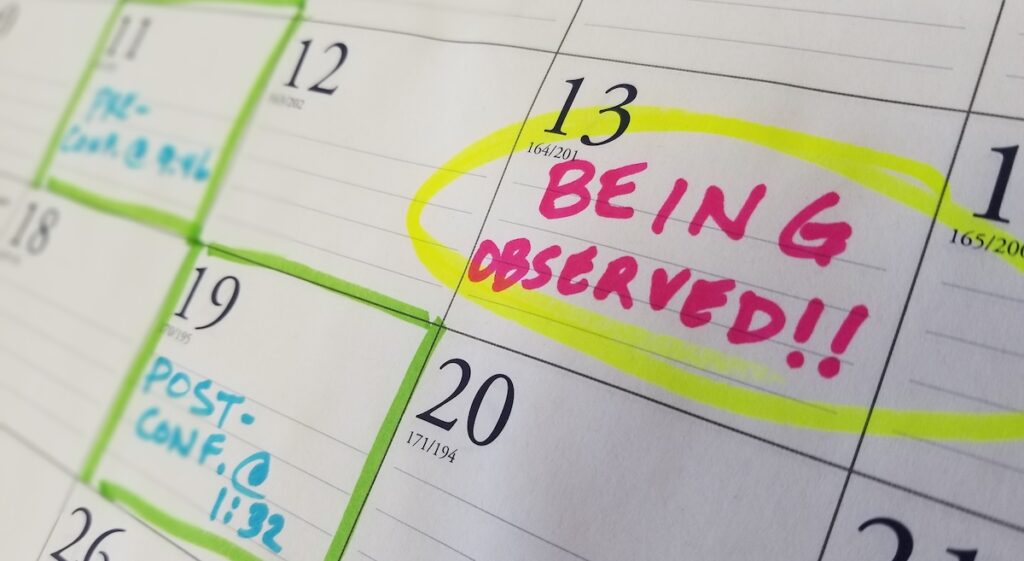
Show them something specific to your learners.
It’s not uncommon for art teachers to repeat projects from year to year, but it’s important to remember your students are changing. Your current students are different learners, have different interests, and a different classroom dynamic than your class last year. Administrators want to know you’re tailoring your lessons to your current students. This doesn’t require a massive overhaul each year. Small changes can include changing the prompt or subject matter to meet students interests, connecting to relevant culture, or featuring a current artist. Then, find an opportunity like during a pre or post-conference, to share these adaptations.
Show them you enjoy teaching students, and they are engaged in learning.
It sounds obvious, but administrators want to see a genuine enthusiasm for working with young people. It’s easy to show you’re having fun when times are good, but be aware of your actions and decision-making under times of stress. How you interact with students when they’re struggling can be a reflection of your perspective and values. When a student isn’t grasping a concept, administrators want to see more than your patience and being nice. They want to see you try different instructional strategies and check for understanding before moving on.
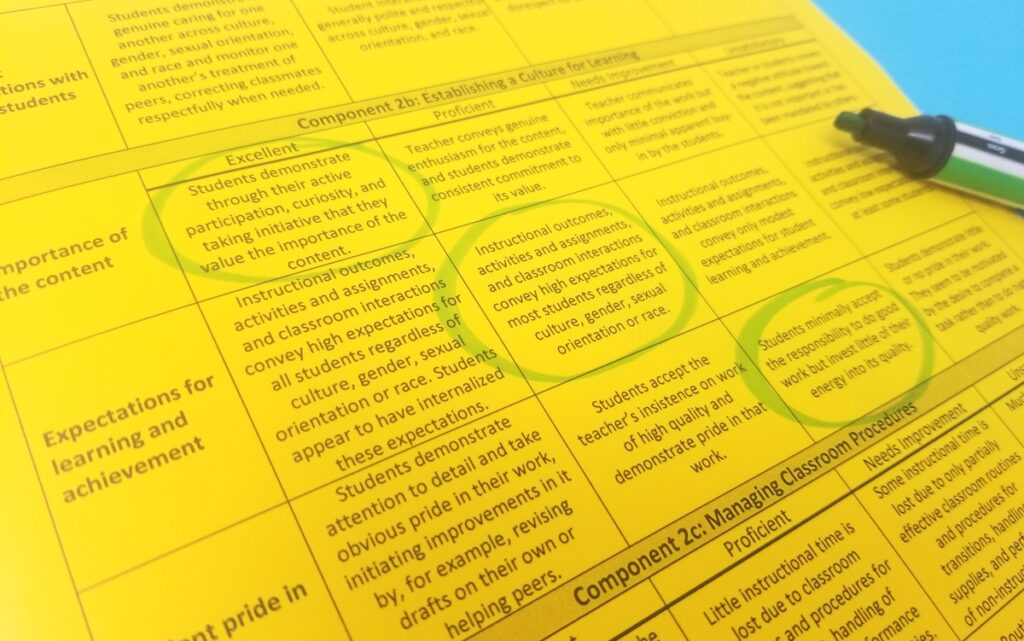
Similarly, how you talk about students, especially when they are driving you nuts, can be another indicator of your enjoyment in teaching. Expressing frustration is okay because, let’s be honest, working with kids can be challenging. But avoid negative or inappropriate comments that might suggest you don’t like the student personally. Administrators want a teacher who wants to teach everyone.
Show them students have the chance to think, reflect, and make choices.
Student-centered teaching is the new normal. Administrators want to see students being more active in their learning and the teacher in a guiding role. For example, rather than giving students direct feedback, use questioning to help them analyze their own piece to determine room for growth. Administrators also prioritize cognitive skills and behaviors over technical art skills. So, they want to see students think critically and make decisions, more than a beautiful product. Remember, you might need to help your administrator understand how these cognitive skills show up in an art room. For example, highlight each of the areas in your lesson design that allow for student choice.
Show them you support your school’s goals.
Administrators want to see their work in action and to know you’re actively contributing to schoolwide initiatives. Reflect on what your administrator has been discussing at staff meetings and presenting for professional development and incorporate those elements into your art room. Don’t debut these lessons on observation day as student behavior is very telling when students are doing something out of routine. Even if you aren’t completely on-board with your school’s initiative, it’s still important to demonstrate you’re a part of the team and contributing to the larger goals.
Show them you reflect and consider new ideas.
The pre and post conferences are times for you and your observer to discuss your instruction, the lesson, and the students. Administrators want to see a teacher being reflective and critical of their teaching; someone who can hear constructive feedback and acknowledge room for growth. Additionally, administrators want a teacher who can consider new ideas or different approaches to meet the same goal. All of this shows up in your body language and responses. When a teacher immediately shoots down new ideas by explaining them away, they haven’t given the time to consider the possibility. Instead, approach the conversation like a think tank to collect ideas you can analyze and process through at a later time.
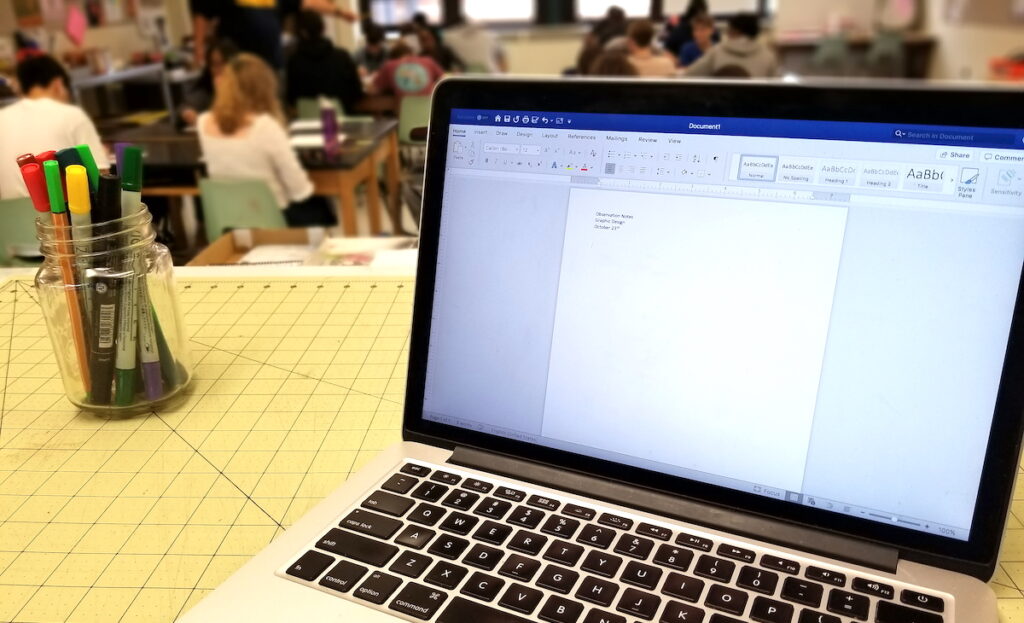
Even if your observer has no art experience, you can still gain from their perspective as another educator in the room. The biggest key to a successful observation is having a shared definition with your administrator of good teaching. Discussing what this looks like in an art room is a great way to bring you two together and can result in a positive observation experience. Overall, your administrator is there to help you learn, grow, and to provide a perspective you might have missed while you were teaching.
How can art teachers help administrators see the skills being developed in an art room?
What happens when art teachers and administrators don’t agree on a definition of “good teaching”?
Magazine articles and podcasts are opinions of professional education contributors and do not necessarily represent the position of the Art of Education University (AOEU) or its academic offerings. Contributors use terms in the way they are most often talked about in the scope of their educational experiences.
